FOTOGRAFIILE SE ÎNCARCĂ...
Casă & casă pentru o singură familie de vânzare în Vila Franca de Xira
12.460.636 RON
Casă & Casă pentru o singură familie (De vânzare)
Referință:
GTWW-T604
/ 8252
Referință:
GTWW-T604
Țară:
PT
Regiune:
Lisboa
Oraș:
Vila Franca de Xira
Categorie:
Proprietate rezidențială
Tipul listării:
De vânzare
Tipul proprietății:
Casă & Casă pentru o singură familie
Subtip proprietate:
Fermă
Dimensiuni proprietate:
4.210 m²
Dimensiuni teren:
39.378 m²
Dormitoare:
20
Piscină:
Da
PREȚ PROPRIETĂȚI IMOBILIARE PER M² ÎN ORAȘE DIN APROPIERE
| Oraș |
Preț mediu per m² casă |
Preț mediu per m² apartament |
|---|---|---|
| Vila Franca de Xira | 12.644 RON | 12.749 RON |
| Benavente | 10.908 RON | - |
| Alenquer | 9.436 RON | 9.977 RON |
| Loures | 15.212 RON | 16.617 RON |
| Loures | 15.404 RON | 16.244 RON |
| Alcochete | 14.576 RON | 18.646 RON |
| Alcochete | 13.841 RON | 16.371 RON |
| Odivelas | 15.216 RON | 16.853 RON |
| Lisboa | 17.128 RON | 20.211 RON |
| Odivelas | 14.685 RON | 16.277 RON |
| Salvaterra de Magos | 7.754 RON | - |
| Montijo | 12.769 RON | 13.612 RON |
| Lisboa | 33.322 RON | 31.045 RON |
| Belas | 16.989 RON | 14.292 RON |
| Torres Vedras | 10.014 RON | 12.192 RON |
| Amadora | - | 14.404 RON |
| Mafra | 17.191 RON | 17.490 RON |
| Alfragide | - | 16.812 RON |
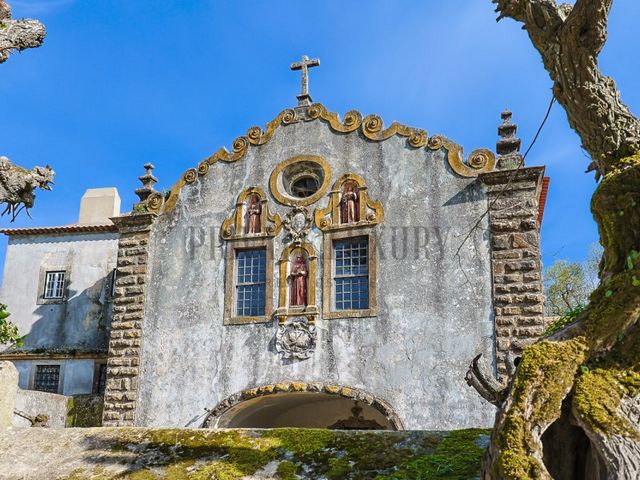
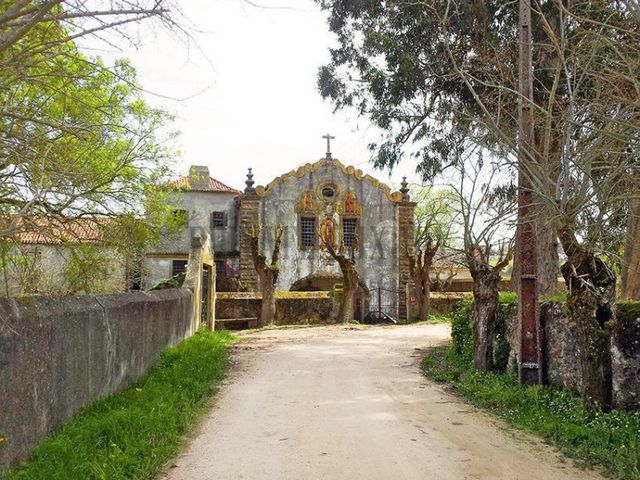

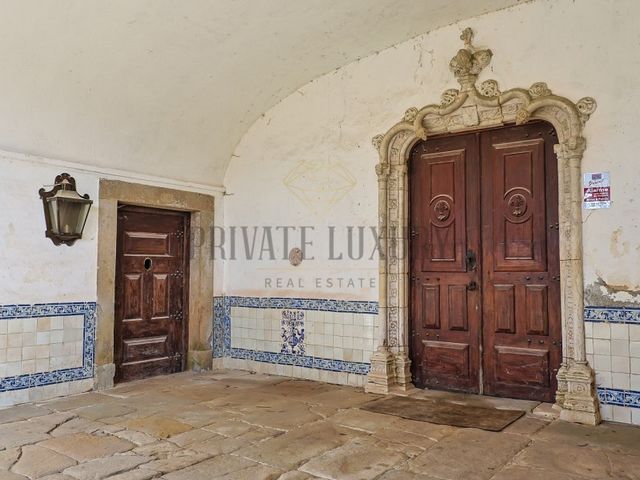
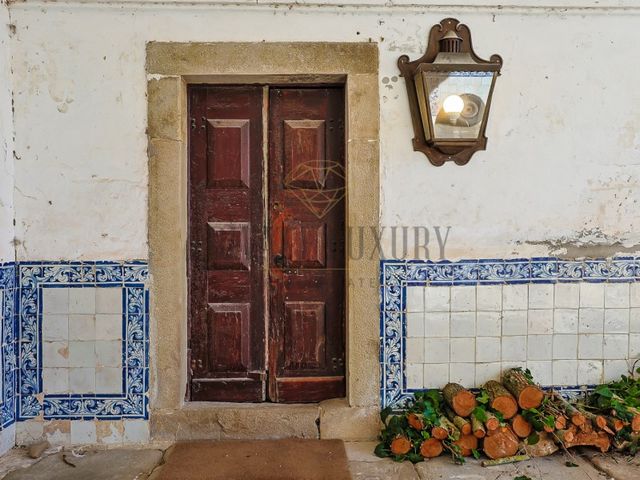
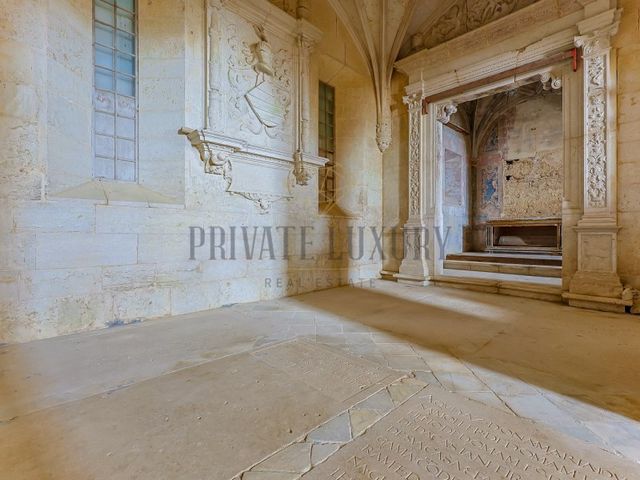
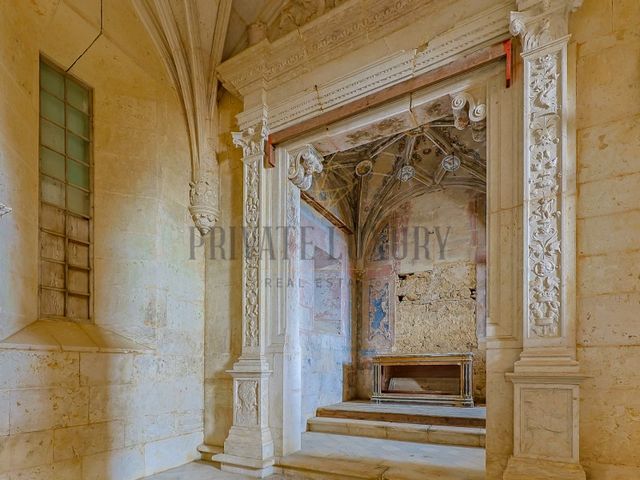

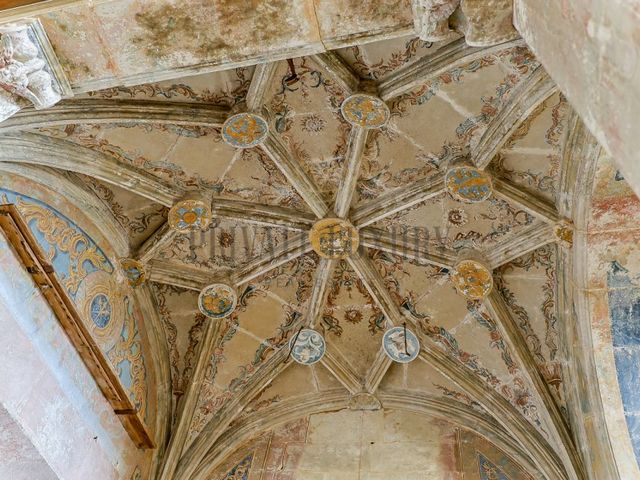
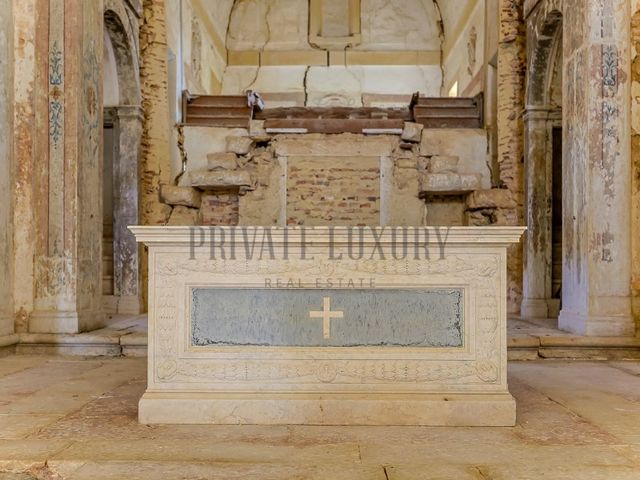
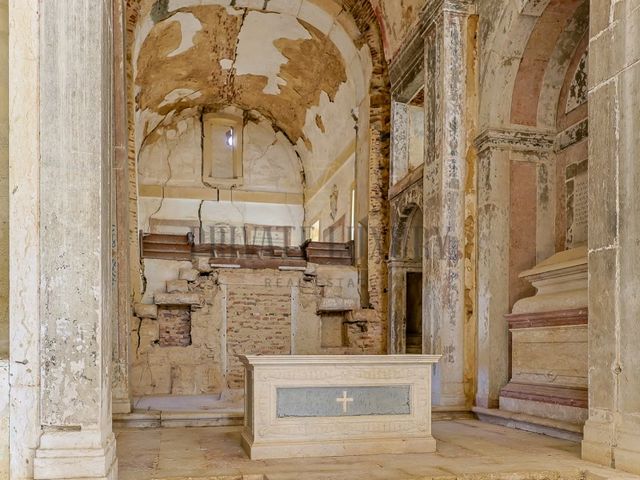


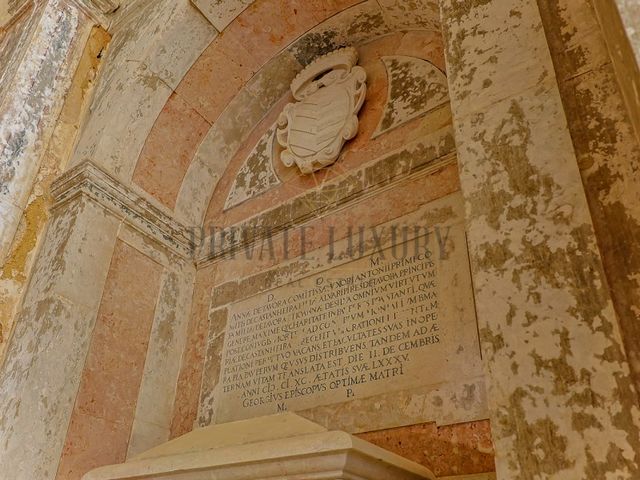
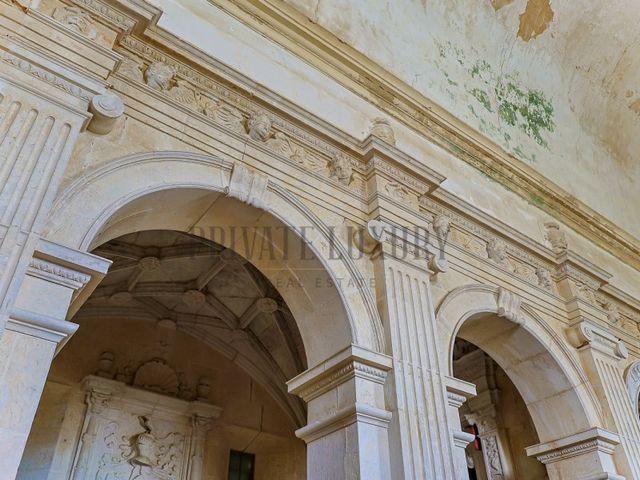
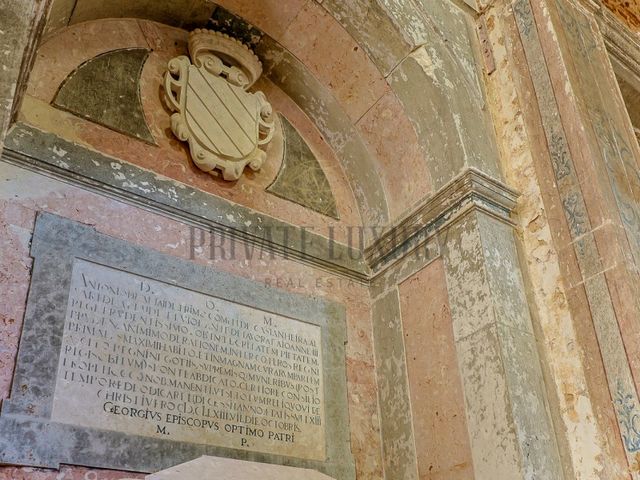
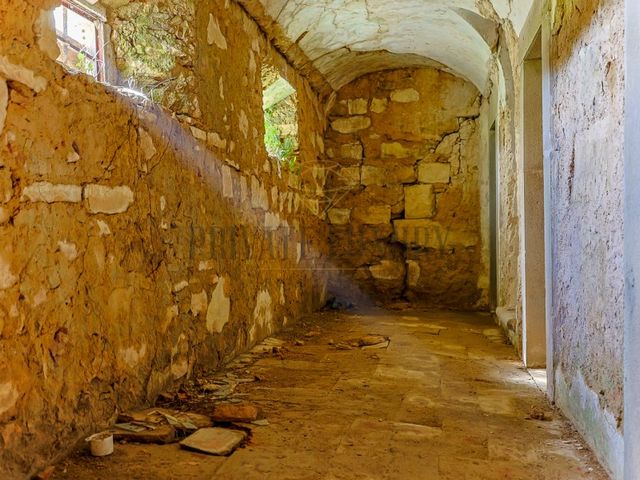
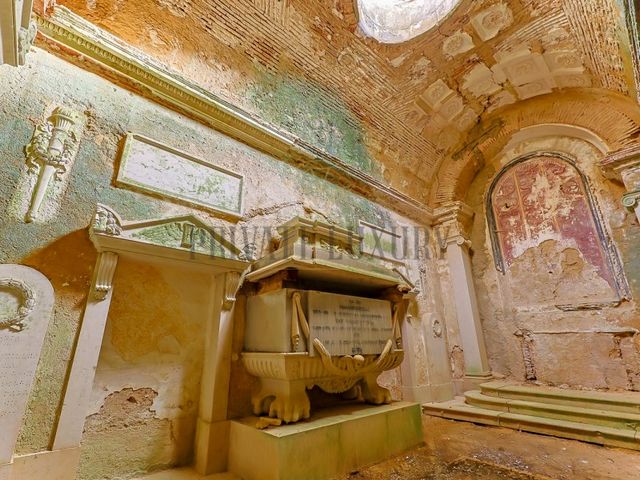
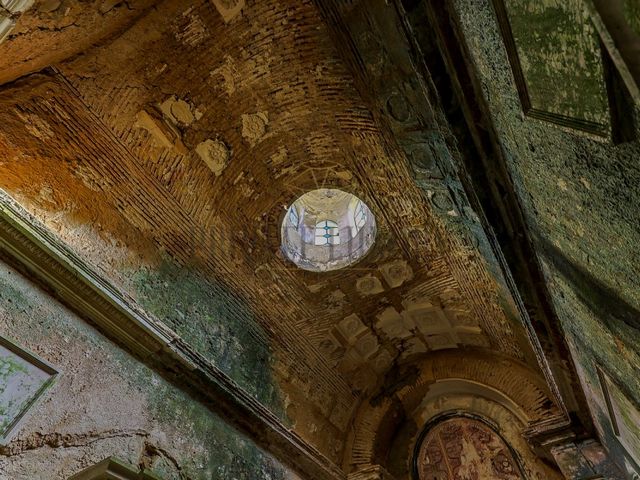
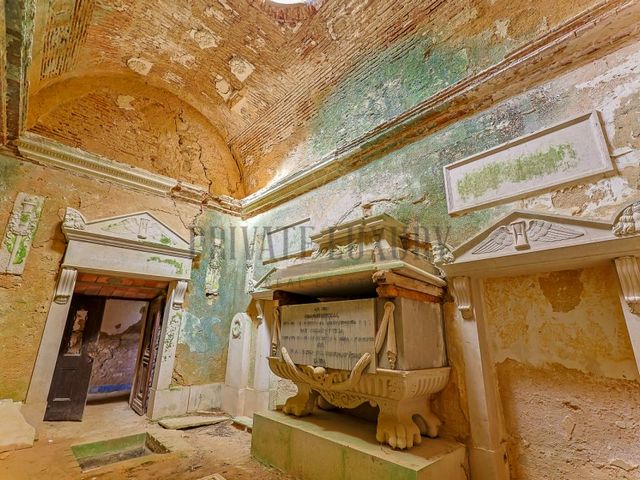
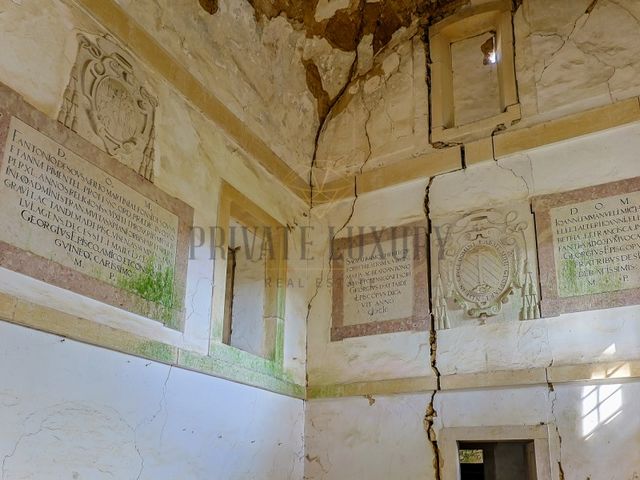
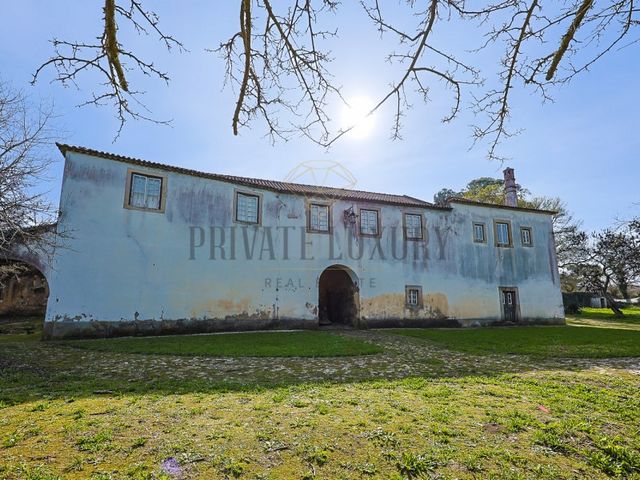
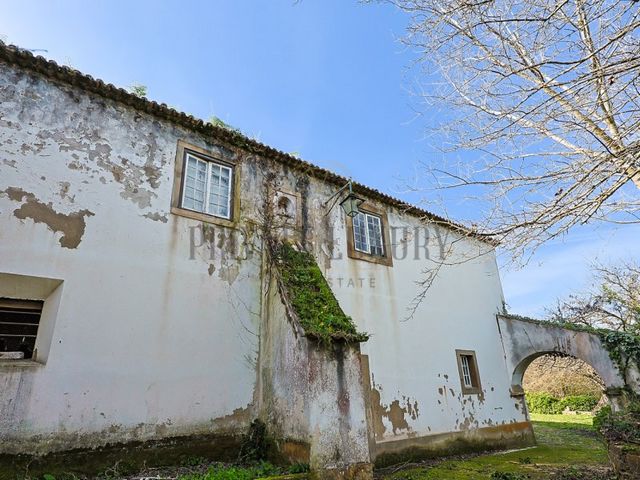
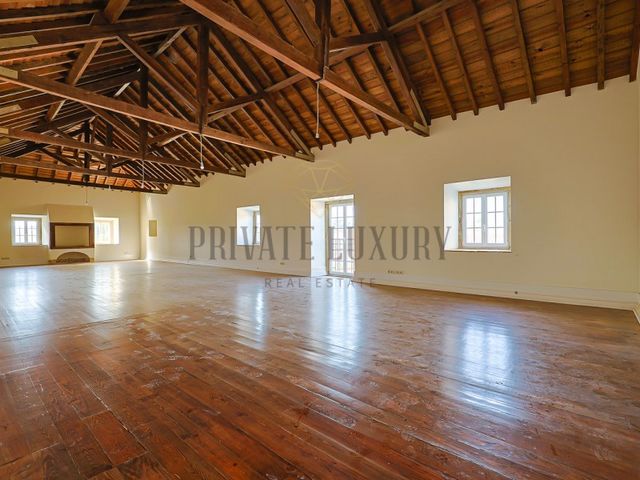
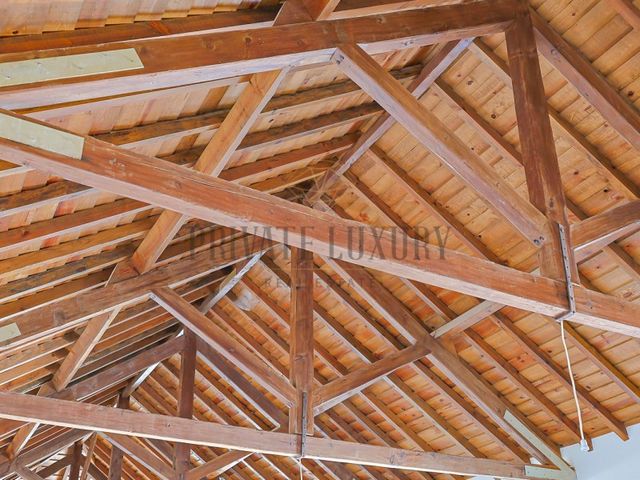


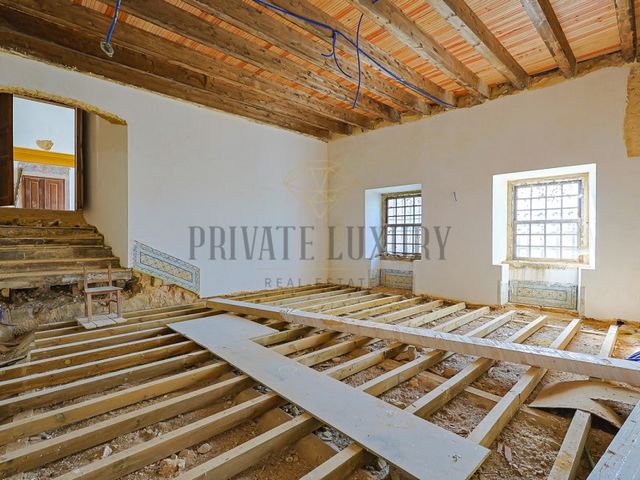

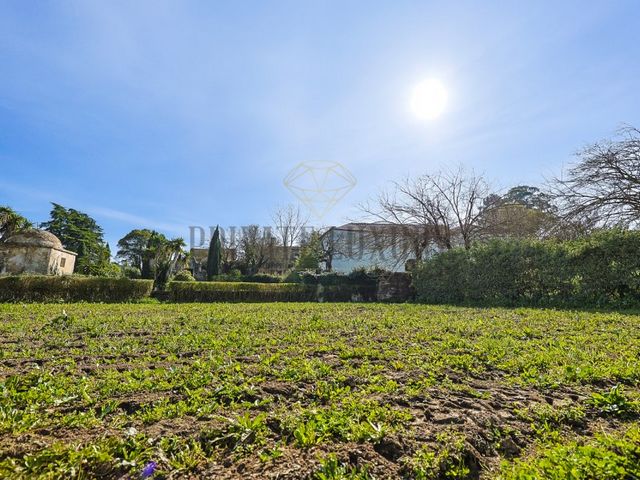



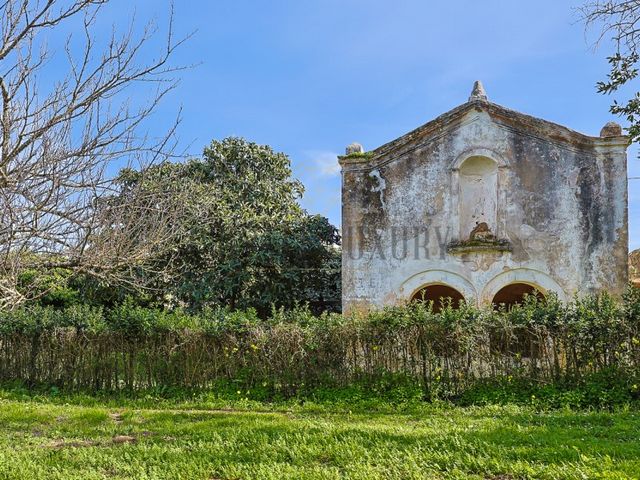
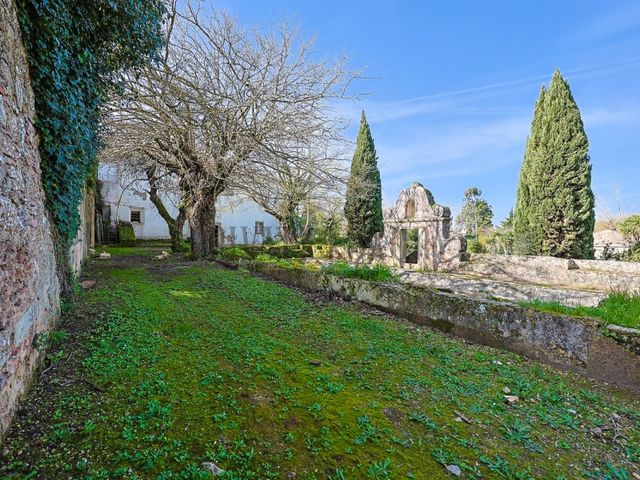
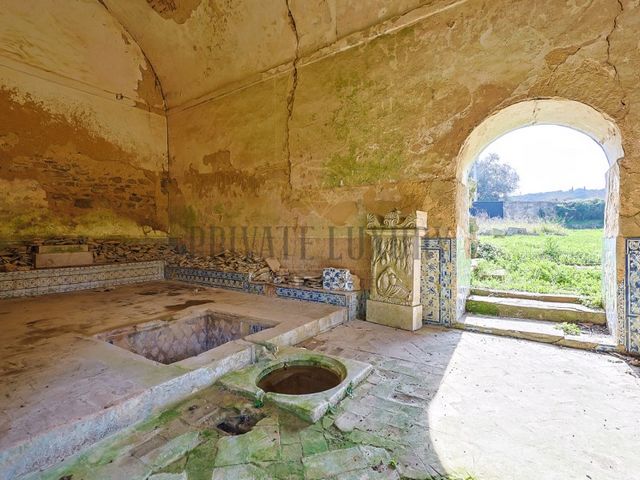
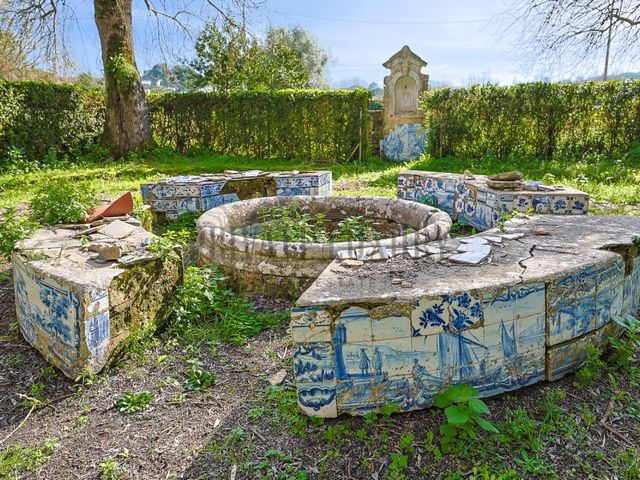
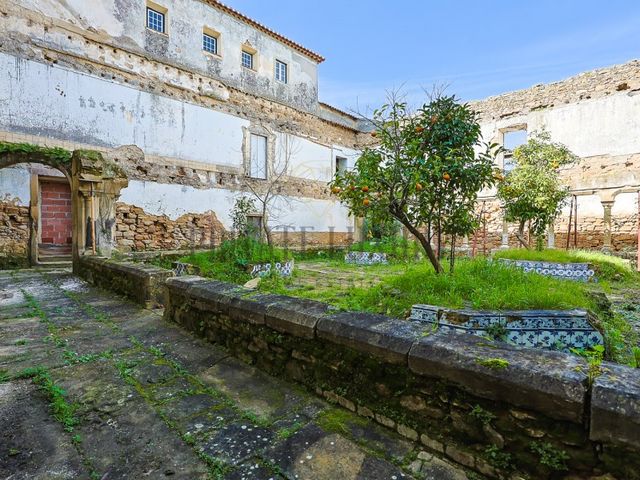
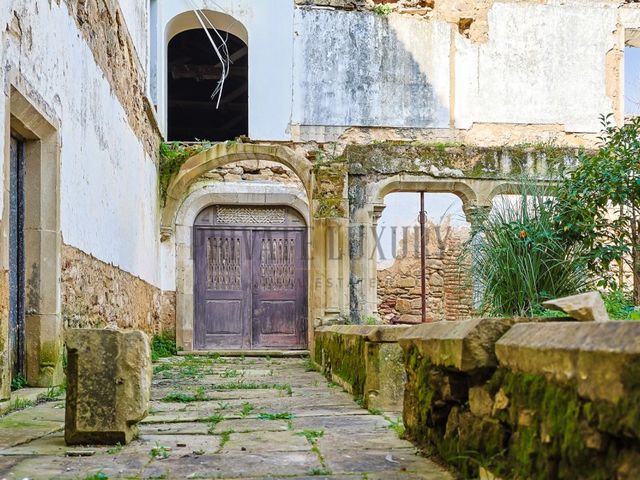
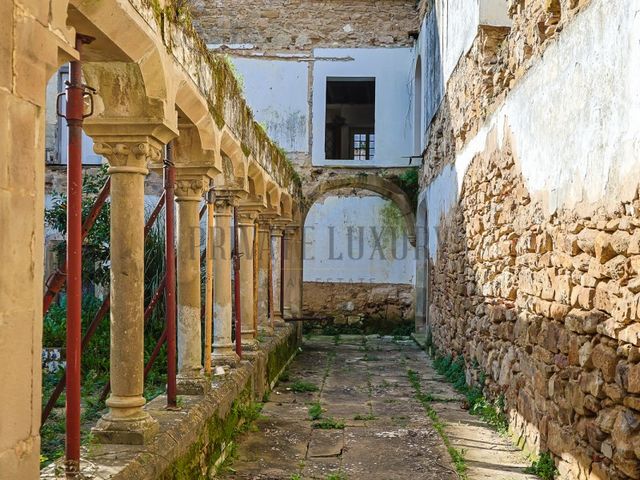

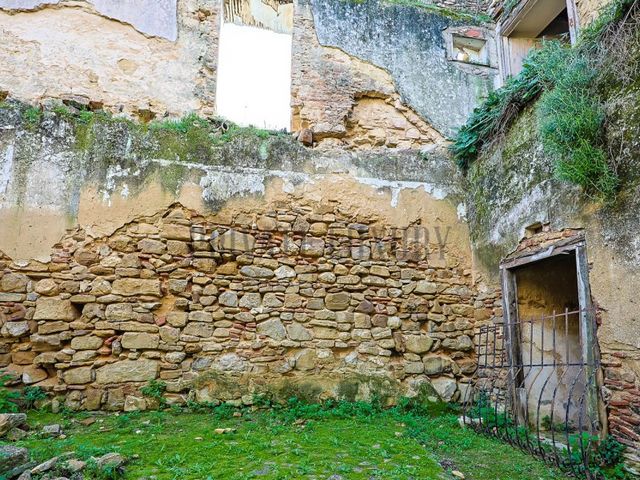
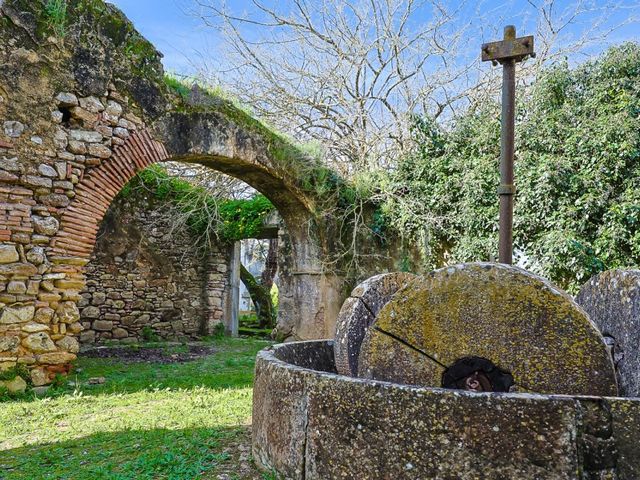

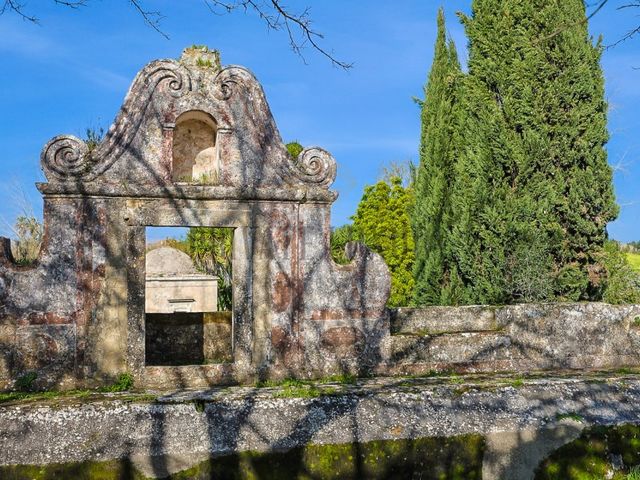
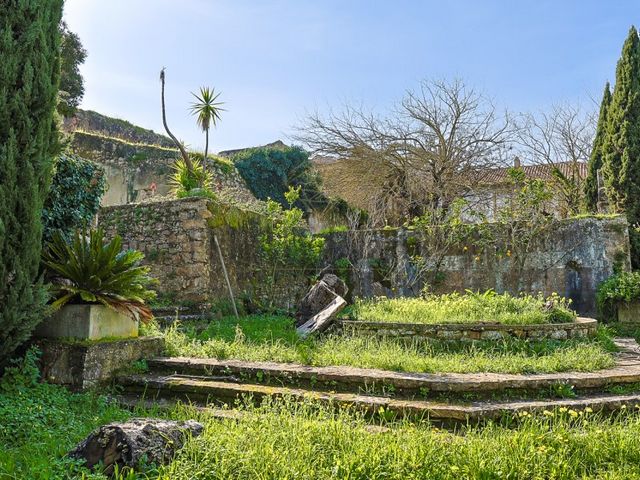
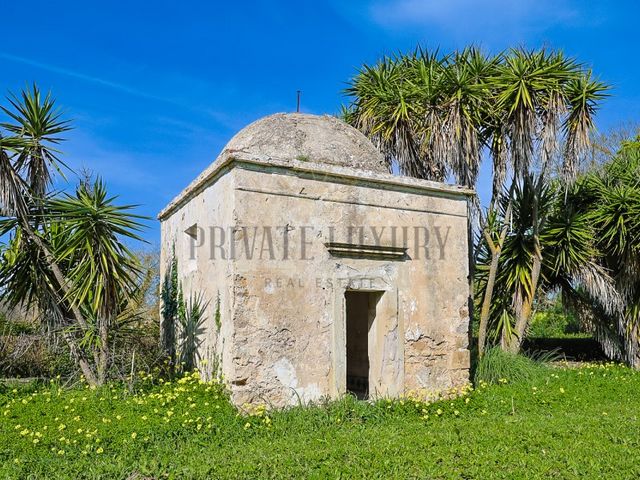


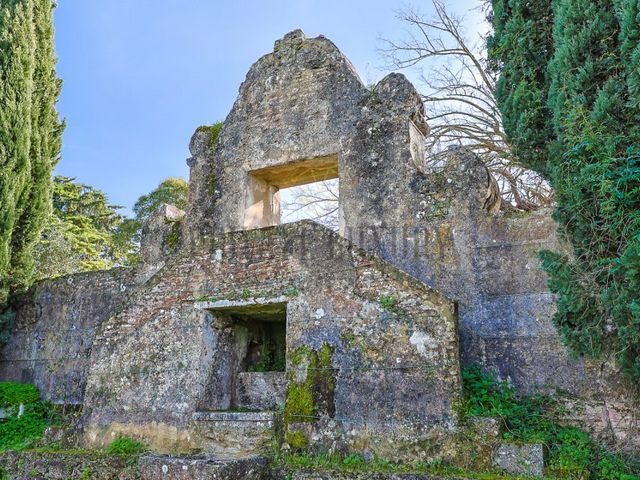
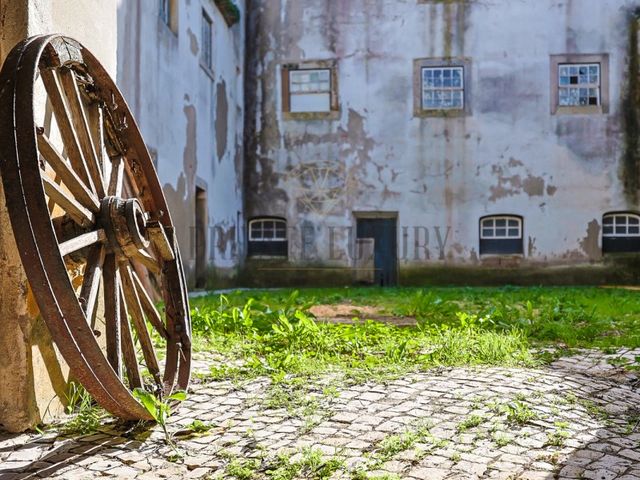
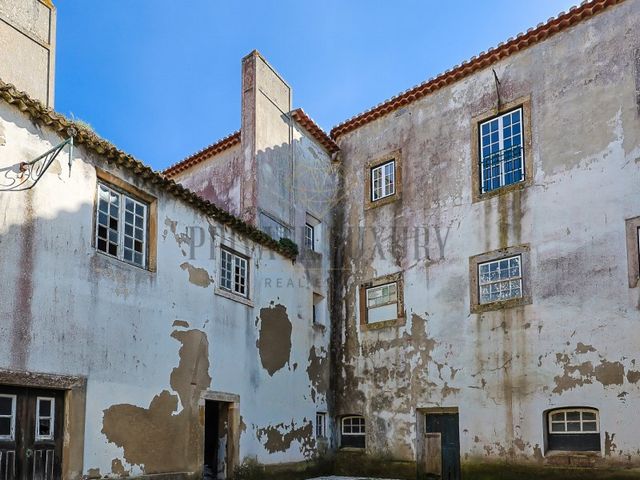


It was founded in 1402 by a community of Franciscan friars from the Convent of São Francisco de Alenquer.
In 1493, Queen Leonor sponsored the construction of the temple's cells and chapels.
In the same year, an important meeting took place between Queen Leonor and Admiral Christopher Columbus in the convent church.At the beginning of the 15th century, King Manuel became the patron of the convent's works.
In 1525, the convent and church were completely built.
In 1530 D. António de Ataide, Count of Castanheira and patron of the convent, had the side chapels of the church built there and later the mausoleum of the Ataíde family.It was looted during the French invasions and after the extinction of the religious orders it was abandoned.
In 1838, the convent was acquired by Joaquim Quintela, Count of Farrobo, who adapted the building into a silk spinning factory.In the last quarter of the 19th century, the convent was acquired by D. Manuel Teles da Gama, who ended up letting the convent deteriorate, using the remaining premises for various purposes.In 1933, the convent became the property of private individuals who lived there.
In 1984, the estate and convent were acquired by private individuals who began the process of rehabilitating the space.
By order of the Ministry of Culture, the process of classifying the convent as a Property of Public Interest began in 1995.
In 1996, the classification as a property of public interest was published in the Diário da Republica - (Dec.Nº2/96, DR 56 of March 6).In the same year, the convent was acquired by another private individual who started a project to build a rural hotel.
The project never came to fruition and was sold again in 2017, starting restoration work to restore the originality of the space.
Energy Rating: F
#ref:8252 Vezi mai mult Vezi mai puțin Located just 30 minutes from Lisbon, in the municipality of Vila Franca de Xira, this historic property offers you the opportunity to own a property with unique characteristics, ideal for a hotel project.For those looking for a hotel investment on the outskirts of Lisbon that is charming, different and offers a good return, this property offers it all due to its unique characteristics and its history that attracts people from all over the world.The church on the property allows us to exploit its full potential by holding weddings with the reception inside the property itself, as well as baptisms and even events.Surrounded by stunning landscapes and a serene atmosphere, this property is the perfect refuge from the hustle and bustle of Lisbon's urban life.The Quinta Convento de Santo António da Castanheira, in Vila Franca de Xira, is a religious architecture building with a simple vernacular regional model exterior with Manueline, Renaissance and Mannerist elements of great erudition inside.With a land area of 39,378m2, (3.9378ha), and an existing gross construction area of 4,209.75m2, with the possibility of extending 25% of the existing area, which can be contiguous or physically individualized, (1,052.43m2); this can be increased to (5262.18m2).Great potential for hotels or services.Farm with rainfed arable crops, vines, pasture, agricultural outbuildings and a house with ground floor and first floor, garden, chapel, cloisters, fresco house.
It was founded in 1402 by a community of Franciscan friars from the Convent of São Francisco de Alenquer.
In 1493, Queen Leonor sponsored the construction of the temple's cells and chapels.
In the same year, an important meeting took place between Queen Leonor and Admiral Christopher Columbus in the convent church.At the beginning of the 15th century, King Manuel became the patron of the convent's works.
In 1525, the convent and church were completely built.
In 1530 D. António de Ataide, Count of Castanheira and patron of the convent, had the side chapels of the church built there and later the mausoleum of the Ataíde family.It was looted during the French invasions and after the extinction of the religious orders it was abandoned.
In 1838, the convent was acquired by Joaquim Quintela, Count of Farrobo, who adapted the building into a silk spinning factory.In the last quarter of the 19th century, the convent was acquired by D. Manuel Teles da Gama, who ended up letting the convent deteriorate, using the remaining premises for various purposes.In 1933, the convent became the property of private individuals who lived there.
In 1984, the estate and convent were acquired by private individuals who began the process of rehabilitating the space.
By order of the Ministry of Culture, the process of classifying the convent as a Property of Public Interest began in 1995.
In 1996, the classification as a property of public interest was published in the Diário da Republica - (Dec.Nº2/96, DR 56 of March 6).In the same year, the convent was acquired by another private individual who started a project to build a rural hotel.
The project never came to fruition and was sold again in 2017, starting restoration work to restore the originality of the space.
Energiekategorie: F
#ref:8252 La Quinta Convento de Santo António da Castanheira, en Vila Franca de Xira, es un edificio de arquitectura religiosa con un exterior sencillo de modelo regional vernáculo con elementos manuelinos, renacentistas y manieristas de gran erudición en su interior.
Con una superficie de terreno de 39.378m2, (3,9378ha), y con una superficie bruta construida existente de 4.209,75m2, con posibilidad de ampliar el 25% de la superficie existente, que puede ser contigua o individualizada físicamente, (1.025,43m3); Se puede aumentar a (5262.18m2).
Gran potencial para Hostelería o servicios.
Finca con cultivo herbáceo de secano, viñedo, pastos, dependencia agrícola y una casa destinada a vivienda en planta baja y 1ª planta, jardín, capilla, claustros, casa fresca.
Fue fundada en 1402 por una comunidad de frailes del Convento de São Francisco de Alenquer.
En 1493, la reina Leonor patrocinó la construcción de las celdas y capillas del templo.
En el mismo año, tuvo lugar un importante encuentro entre la reina Leonor y el almirante Cristóbal Colón en la iglesia del convento.
A principios del siglo XV, el rey Manuel se convirtió en el mecenas de las obras del convento.
En 1525 se terminó la construcción completa del convento y de la iglesia.
En 1530 D. António de Ataíde, conde de Castanheira y patrón del convento, ordenó la construcción de las capillas laterales de la iglesia y más tarde del mausoleo de la familia Ataíde.
Fue saqueada durante las invasiones francesas y tras la extinción de las órdenes religiosas fue abandonada.
En 1838 el convento fue adquirido por Joaquim Quintela, conde de Farrobo, quien adaptó el edificio a una fábrica de hilados de seda.
En el último cuarto de siglo. En el siglo XIX, el convento fue adquirido por D. Manuel Teles da Gama, quien acabó dejando que el convento cayera en mal estado, utilizando las dependencias restantes para diversos fines.
En 1933 el convento pasó a ser propiedad de particulares que vivían en el convento.
En 1984 la finca y el convento fueron adquiridos por particulares que iniciaron el proceso de rehabilitación en el espacio.
Por orden del Ministerio de Cultura, en 1995 se inició el proceso de clasificación del convento como Bien de Interés Público.
En 1996 se publicó en el Diario Oficial la calificación como bien de interés público (Decreto Nº 2/96, DR 56 de 6 de marzo).
En el mismo año, el convento fue adquirido por otro particular que inició un proyecto para la instalación de un Hotel Rural.
El proyecto nunca se llevó a cabo y se volvió a vender en 2017, iniciándose las obras de restauración devolviendo la originalidad al espacio.
Categoría Energética: F
#ref:8252 La Quinta Convento de Santo António da Castanheira, à Vila Franca de Xira, est un bâtiment d'architecture religieuse avec un modèle régional vernaculaire simple à l'extérieur avec des éléments manuélins, Renaissance et maniéristes de grande érudition à l'intérieur.
Avec une superficie de terrain de 39 378 m2 (3,9378 ha) et une surface de construction brute existante de 4 209,75 m2, avec la possibilité d'agrandir 25 % de la surface existante, qui peut être contiguë ou physiquement individualisée (1 025,43 m3) ; Il peut être augmenté à (5262.18m2).
Grand potentiel pour l'hôtellerie ou les services.
Ferme avec culture agricole en terre sèche, vigne, pâturage, dépendance agricole et une maison pour le logement au rez-de-chaussée et au 1er étage, jardin, chapelle, cloître, maison fraîche.
Elle a été fondée en 1402 par une communauté de frères du couvent de São Francisco de Alenquer.
En 1493, la reine Leonor parraina la construction des cellules et des chapelles du temple.
La même année, une importante rencontre a lieu entre la reine Leonor et l'amiral Christophe Colomb dans l'église du couvent.
Au début du XVe siècle, le roi Manuel devient le patron des travaux du couvent.
En 1525, la construction complète du couvent et de l'église est achevée.
En 1530, D. António de Ataíde, comte de Castanheira et patron du couvent, ordonna la construction des chapelles latérales de l'église et plus tard du mausolée de la famille Ataíde.
Il a été pillé lors des invasions françaises et après l'extinction des ordres religieux, il a été abandonné.
En 1838, le couvent a été acquis par Joaquim Quintela, comte de Farrobo, qui a adapté le bâtiment en une filature de soie.
Dans le dernier quart du siècle. Au XIXe siècle, le couvent a été acquis par D. Manuel Teles da Gama, qui a fini par laisser le couvent tomber en ruine, en utilisant les dépendances restantes à diverses fins.
En 1933, le couvent est devenu la propriété de particuliers qui y vivaient.
En 1984, la ferme et le couvent ont été acquis par des particuliers qui ont commencé le processus de réhabilitation de l'espace.
Sur ordre du ministère de la Culture, le processus de classement du couvent en tant que bien d'intérêt public a commencé en 1995.
En 1996, le classement en tant que bien d'intérêt public a été publié au Journal officiel (décret n° 2/96, DR 56 du 6 mars).
La même année, le couvent a été acquis par un autre particulier qui a lancé un projet d'installation d'un hôtel rural.
Le projet n'a jamais été réalisé et a été revendu en 2017, entamant des travaux de restauration redonnant à l'espace son originalité.
Performance Énergétique: F
#ref:8252 Located just 30 minutes from Lisbon, in the municipality of Vila Franca de Xira, this historic property offers you the opportunity to own a property with unique characteristics, ideal for a hotel project.For those looking for a hotel investment on the outskirts of Lisbon that is charming, different and offers a good return, this property offers it all due to its unique characteristics and its history that attracts people from all over the world.The church on the property allows us to exploit its full potential by holding weddings with the reception inside the property itself, as well as baptisms and even events.Surrounded by stunning landscapes and a serene atmosphere, this property is the perfect refuge from the hustle and bustle of Lisbon's urban life.The Quinta Convento de Santo António da Castanheira, in Vila Franca de Xira, is a religious architecture building with a simple vernacular regional model exterior with Manueline, Renaissance and Mannerist elements of great erudition inside.With a land area of 39,378m2, (3.9378ha), and an existing gross construction area of 4,209.75m2, with the possibility of extending 25% of the existing area, which can be contiguous or physically individualized, (1,052.43m2); this can be increased to (5262.18m2).Great potential for hotels or services.Farm with rainfed arable crops, vines, pasture, agricultural outbuildings and a house with ground floor and first floor, garden, chapel, cloisters, fresco house.
It was founded in 1402 by a community of Franciscan friars from the Convent of São Francisco de Alenquer.
In 1493, Queen Leonor sponsored the construction of the temple's cells and chapels.
In the same year, an important meeting took place between Queen Leonor and Admiral Christopher Columbus in the convent church.At the beginning of the 15th century, King Manuel became the patron of the convent's works.
In 1525, the convent and church were completely built.
In 1530 D. António de Ataide, Count of Castanheira and patron of the convent, had the side chapels of the church built there and later the mausoleum of the Ataíde family.It was looted during the French invasions and after the extinction of the religious orders it was abandoned.
In 1838, the convent was acquired by Joaquim Quintela, Count of Farrobo, who adapted the building into a silk spinning factory.In the last quarter of the 19th century, the convent was acquired by D. Manuel Teles da Gama, who ended up letting the convent deteriorate, using the remaining premises for various purposes.In 1933, the convent became the property of private individuals who lived there.
In 1984, the estate and convent were acquired by private individuals who began the process of rehabilitating the space.
By order of the Ministry of Culture, the process of classifying the convent as a Property of Public Interest began in 1995.
In 1996, the classification as a property of public interest was published in the Diário da Republica - (Dec.Nº2/96, DR 56 of March 6).In the same year, the convent was acquired by another private individual who started a project to build a rural hotel.
The project never came to fruition and was sold again in 2017, starting restoration work to restore the originality of the space.
Energy Rating: F
#ref:8252 Located just 30 minutes from Lisbon, in the municipality of Vila Franca de Xira, this historic property offers you the opportunity to own a property with unique characteristics, ideal for a hotel project.For those looking for a hotel investment on the outskirts of Lisbon that is charming, different and offers a good return, this property offers it all due to its unique characteristics and its history that attracts people from all over the world.The church on the property allows us to exploit its full potential by holding weddings with the reception inside the property itself, as well as baptisms and even events.Surrounded by stunning landscapes and a serene atmosphere, this property is the perfect refuge from the hustle and bustle of Lisbon's urban life.The Quinta Convento de Santo António da Castanheira, in Vila Franca de Xira, is a religious architecture building with a simple vernacular regional model exterior with Manueline, Renaissance and Mannerist elements of great erudition inside.With a land area of 39,378m2, (3.9378ha), and an existing gross construction area of 4,209.75m2, with the possibility of extending 25% of the existing area, which can be contiguous or physically individualized, (1,052.43m2); this can be increased to (5262.18m2).Great potential for hotels or services.Farm with rainfed arable crops, vines, pasture, agricultural outbuildings and a house with ground floor and first floor, garden, chapel, cloisters, fresco house.
It was founded in 1402 by a community of Franciscan friars from the Convent of São Francisco de Alenquer.
In 1493, Queen Leonor sponsored the construction of the temple's cells and chapels.
In the same year, an important meeting took place between Queen Leonor and Admiral Christopher Columbus in the convent church.At the beginning of the 15th century, King Manuel became the patron of the convent's works.
In 1525, the convent and church were completely built.
In 1530 D. António de Ataide, Count of Castanheira and patron of the convent, had the side chapels of the church built there and later the mausoleum of the Ataíde family.It was looted during the French invasions and after the extinction of the religious orders it was abandoned.
In 1838, the convent was acquired by Joaquim Quintela, Count of Farrobo, who adapted the building into a silk spinning factory.In the last quarter of the 19th century, the convent was acquired by D. Manuel Teles da Gama, who ended up letting the convent deteriorate, using the remaining premises for various purposes.In 1933, the convent became the property of private individuals who lived there.
In 1984, the estate and convent were acquired by private individuals who began the process of rehabilitating the space.
By order of the Ministry of Culture, the process of classifying the convent as a Property of Public Interest began in 1995.
In 1996, the classification as a property of public interest was published in the Diário da Republica - (Dec.Nº2/96, DR 56 of March 6).In the same year, the convent was acquired by another private individual who started a project to build a rural hotel.
The project never came to fruition and was sold again in 2017, starting restoration work to restore the originality of the space.
Energie Categorie: F
#ref:8252 Localizado a apenas 30 minutos de Lisboa, no concelho de Vila Franca de Xira, esta quinta histórica oferece-lhe a oportunidade de possuir um imóvel de características únicas, ideal para para um projeto hoteleiro.Para quem procura um investimento hoteleiro nos arredores de Lisboa com charme, diferente e com um bom retorno, esta Quinta oferece-lhe tudo isso devido às suas características singulares e à sua historia que atrai pessoas pelo mundo inteiro.A Igreja inserida na Quinta permite-nos explorar o seu máximo potencial através de celebrar casamentos com o copo de água dentro da própria Quinta, assim como baptizados ou mesmo eventos.Envolto em paisagens deslumbrantes e numa atmosfera serena, esta propriedade é o refúgio perfeito da agitação da vida urbana de Lisboa.A Quinta Convento de Santo António da Castanheira, em Vila Franca de Xira é um edifício de arquitetura religiosa com exterior de modelo regional vernacular simples com elementos manuelinos, renascentistas e maneiristas de grande erudição no seu interior.
Com uma área de terreno de 39.378m2 , (3,9378ha) , e com uma área bruta de construção existente 4.209,75m2 , com possibilidade de ampliação de 25% da área existente podendo ser contígua ou fisicamente individualizada, (1.052,43m2); podendo passar a mesma a (5262,18m2).
Grande potencial para Hotelaria ou serviços.
Quinta com cultura arvense de sequeiro, vinha, pastagem, dependência agrícola e uma casa para habitação de r/c e 1º andar, jardim, capela, claustros, casa de fresco.
Foi fundado em 1402 por uma comunidade de frades Fransciscanos provenientes do Convento de São Francisco de Alenquer.
Em 1493 a Rainha D. Leonor patrocinava a construção das celas e das capelas do templo.
No mesmo ano dá-se uma importante reunião entre a rainha D. Leonor e o Almirante Cristovão Colombo na igreja do convento.
No inicio do século XV o Rei D. Manuel tornava-se no mecenas das obras do convento.
Em 1525 fica terminada a edificação total do convento e da igreja.
Em 1530 D. António de Ataide, Conde da Castanheira e padroeiro do convento, manda ali edificar as capelas laterais da igreja e mais tarde o mausoléu da familia Ataíde.
Foi saqueado durante as invasões francesas e após a extinção das ordens religiosas foi votado ao abandono.
Em 1838 o convento foi adquirido por Joaquim Quintela, Conde de Farrobo que adaptou o edificio a fábrica de fiação de seda.
No último quartel do séc. XIX, o convento foi adquirido por D. Manuel Teles da Gama que acabou por deixar o espaço conventual degradar-se, utilizando as restantes dependências para fins diversos.
Em 1933 o convento passa a ser propriedade de particulares que habitava o convento.
Em 1984 a quinta e convento são adquiridos por particulares que iniciam o processo de reabilitação no espaço.
Por despacho do Minstério da Cultura inicia-se em 1995 o processo de classificação do convento como Imóvel de Interesse Público.
Em 1996 é publicado em Diário da Republica a classificação como imóvel de interesse público - (Dec.Nº2/96, DR 56 de 6 de Março).
No mesmo ano o convento é adquirido por outro particular que inicia um projecto para instalação de um Hotel Rural.
O projecto nunca foi realizado e foi novamente vendido em 2017, iniciando obras de restauro devolvendo a originalidade ao espaço.
Categoria Energética: F
#ref:8252 Located just 30 minutes from Lisbon, in the municipality of Vila Franca de Xira, this historic property offers you the opportunity to own a property with unique characteristics, ideal for a hotel project.For those looking for a hotel investment on the outskirts of Lisbon that is charming, different and offers a good return, this property offers it all due to its unique characteristics and its history that attracts people from all over the world.The church on the property allows us to exploit its full potential by holding weddings with the reception inside the property itself, as well as baptisms and even events.Surrounded by stunning landscapes and a serene atmosphere, this property is the perfect refuge from the hustle and bustle of Lisbon's urban life.The Quinta Convento de Santo António da Castanheira, in Vila Franca de Xira, is a religious architecture building with a simple vernacular regional model exterior with Manueline, Renaissance and Mannerist elements of great erudition inside.With a land area of 39,378m2, (3.9378ha), and an existing gross construction area of 4,209.75m2, with the possibility of extending 25% of the existing area, which can be contiguous or physically individualized, (1,052.43m2); this can be increased to (5262.18m2).Great potential for hotels or services.Farm with rainfed arable crops, vines, pasture, agricultural outbuildings and a house with ground floor and first floor, garden, chapel, cloisters, fresco house.
It was founded in 1402 by a community of Franciscan friars from the Convent of São Francisco de Alenquer.
In 1493, Queen Leonor sponsored the construction of the temple's cells and chapels.
In the same year, an important meeting took place between Queen Leonor and Admiral Christopher Columbus in the convent church.At the beginning of the 15th century, King Manuel became the patron of the convent's works.
In 1525, the convent and church were completely built.
In 1530 D. António de Ataide, Count of Castanheira and patron of the convent, had the side chapels of the church built there and later the mausoleum of the Ataíde family.It was looted during the French invasions and after the extinction of the religious orders it was abandoned.
In 1838, the convent was acquired by Joaquim Quintela, Count of Farrobo, who adapted the building into a silk spinning factory.In the last quarter of the 19th century, the convent was acquired by D. Manuel Teles da Gama, who ended up letting the convent deteriorate, using the remaining premises for various purposes.In 1933, the convent became the property of private individuals who lived there.
In 1984, the estate and convent were acquired by private individuals who began the process of rehabilitating the space.
By order of the Ministry of Culture, the process of classifying the convent as a Property of Public Interest began in 1995.
In 1996, the classification as a property of public interest was published in the Diário da Republica - (Dec.Nº2/96, DR 56 of March 6).In the same year, the convent was acquired by another private individual who started a project to build a rural hotel.
The project never came to fruition and was sold again in 2017, starting restoration work to restore the originality of the space.
: F
#ref:8252 Located just 30 minutes from Lisbon, in the municipality of Vila Franca de Xira, this historic property offers you the opportunity to own a property with unique characteristics, ideal for a hotel project.For those looking for a hotel investment on the outskirts of Lisbon that is charming, different and offers a good return, this property offers it all due to its unique characteristics and its history that attracts people from all over the world.The church on the property allows us to exploit its full potential by holding weddings with the reception inside the property itself, as well as baptisms and even events.Surrounded by stunning landscapes and a serene atmosphere, this property is the perfect refuge from the hustle and bustle of Lisbon's urban life.The Quinta Convento de Santo António da Castanheira, in Vila Franca de Xira, is a religious architecture building with a simple vernacular regional model exterior with Manueline, Renaissance and Mannerist elements of great erudition inside.With a land area of 39,378m2, (3.9378ha), and an existing gross construction area of 4,209.75m2, with the possibility of extending 25% of the existing area, which can be contiguous or physically individualized, (1,052.43m2); this can be increased to (5262.18m2).Great potential for hotels or services.Farm with rainfed arable crops, vines, pasture, agricultural outbuildings and a house with ground floor and first floor, garden, chapel, cloisters, fresco house.
It was founded in 1402 by a community of Franciscan friars from the Convent of São Francisco de Alenquer.
In 1493, Queen Leonor sponsored the construction of the temple's cells and chapels.
In the same year, an important meeting took place between Queen Leonor and Admiral Christopher Columbus in the convent church.At the beginning of the 15th century, King Manuel became the patron of the convent's works.
In 1525, the convent and church were completely built.
In 1530 D. António de Ataide, Count of Castanheira and patron of the convent, had the side chapels of the church built there and later the mausoleum of the Ataíde family.It was looted during the French invasions and after the extinction of the religious orders it was abandoned.
In 1838, the convent was acquired by Joaquim Quintela, Count of Farrobo, who adapted the building into a silk spinning factory.In the last quarter of the 19th century, the convent was acquired by D. Manuel Teles da Gama, who ended up letting the convent deteriorate, using the remaining premises for various purposes.In 1933, the convent became the property of private individuals who lived there.
In 1984, the estate and convent were acquired by private individuals who began the process of rehabilitating the space.
By order of the Ministry of Culture, the process of classifying the convent as a Property of Public Interest began in 1995.
In 1996, the classification as a property of public interest was published in the Diário da Republica - (Dec.Nº2/96, DR 56 of March 6).In the same year, the convent was acquired by another private individual who started a project to build a rural hotel.
The project never came to fruition and was sold again in 2017, starting restoration work to restore the originality of the space.
Energy Rating: F
#ref:8252